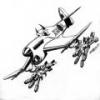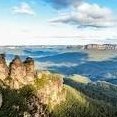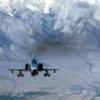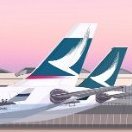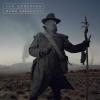-
Posts
7,964 -
Joined
-
Last visited
About gingerbob
- Currently Viewing Forums Index
- Birthday 20/03/1965
Contact Methods
-
Website URL
http://
Profile Information
-
Gender
Male
-
Location
Bucksport Maine USA
Recent Profile Visitors
9,657 profile views
gingerbob's Achievements

Completely Obsessed Member (6/9)
5.1k
Reputation
-
I could definitely go for one of those donuts!
-
Thanks Charlie. I've been trying to catch up with the GB- I have enjoyed it thoroughly, even though I didn't get to actually DO anything! Anyway, it occurred to me that I ought to post another update. Closing is supposed to be this coming Wednesday, and there's a whopping big UHaul truck blocking our drive and backed up to the steps. It remains to be seen how much room, if any, will be available for my stash. I've already snuck some in when we loaded a bookshelf and CD/DVD shelf. Hmm, ought to put something on these shelves, rather than empty air... Oh, for TARDIS technology.
-
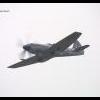
First dip into the world of 1/32 scale planes
gingerbob replied to szeregowy's topic in Aircraft WWII
The Stuka will have more cockpit stuff to deal with, if that is a factor. After the fuselage is together, there shouldn't be much difference between that and one of the single-seaters. The flaps/ailerons might be a bit of a fuss, compared to "normal" planes. I don't know that there's THAT much difference between scales, other than how much real estate you have to deal with. On the other hand, if your recent aircraft experience is old 72nd kits, you're in for a bit of a shock. The Revell Spitfire might be the simplest, but is also perhaps the least lovely in terms of capturing the essence of the real thing. So it is sort of a question of how quickly you want to get to the stage where you can start flying it around making "NNnnyyyeeeooooowww!" noises. Personally I wouldn't start with one of the more complex kits- the Tamiya may be brilliantly engineered, but there's still a lot of engineering to deal with. As for jigs, your eyeball is the most important.- 30 replies
-
- 1
-

-

1/48 Eduard Spitfire VB 'Little audry'
gingerbob replied to Aims's topic in Ready for Inspection - Aircraft
Fantastic job. Gotta say, though, that once again the oversize Eduard open hood just jumps out at me. And now, of course, you'll tell me that you didn't use it, for that reason! (Not faulting the build, just don't like the engineering choice.) -
Ah yes, ground clearance! I had been surprised that it was such a small increase in diameter on the F2G, but failed to stop and think!
-

1/48 - Supermarine Spitfire Tr.9 by Airfix - released
gingerbob replied to Homebee's topic in The Rumourmonger
Shouldn't that be "for the Tr.9th time"? They strike me as possibly a bit heavy, but I'll wait to see it in person. The hoods seem a bit thick looking. But yeah, I'll certainly end up having to have one regardless. -
Forgive my ignorance, but it seems that the DB600 was really "a step along the way" flowing into the DB601, which I point out (assuming I've got it essentially right) because this gives a different perspective on the list of aircraft which were fitted with it. Sorry if that's nothing new- I'm not particularly up on German engine development, so it made me curious.
-
C, not B.
-
The Seafire 17 wing could bring you to a Seafire III, but you'd have to backdate the oil cooler to the "asymmetric" style (as well as fuselage details to suit). Seafire II did not have folding wing.
-
Hi Andy, Your statement seems clear, but just to be sure, only 11 "all Marks"? I confess that this surprised me initially. However, once I thought about it a wee bit, I surmised that It wasn't an ideal 'operational installation' to begin with, and The better alternatives were probably taking priority for AI units (or their sets priority, or simply just more mature, in manufacturing) The "better alternative" airframes were also pushing the Defiant gradually out of the game Likewise, I had not been aware that the sole(?) Defiant AI victory was also its last in night defense. Back to the eleven, is that figure based on what you've been able to deduce from myriad clues, or have you encountered a statement in the records along those lines? Just curious, not challenging your accuracy. bob



